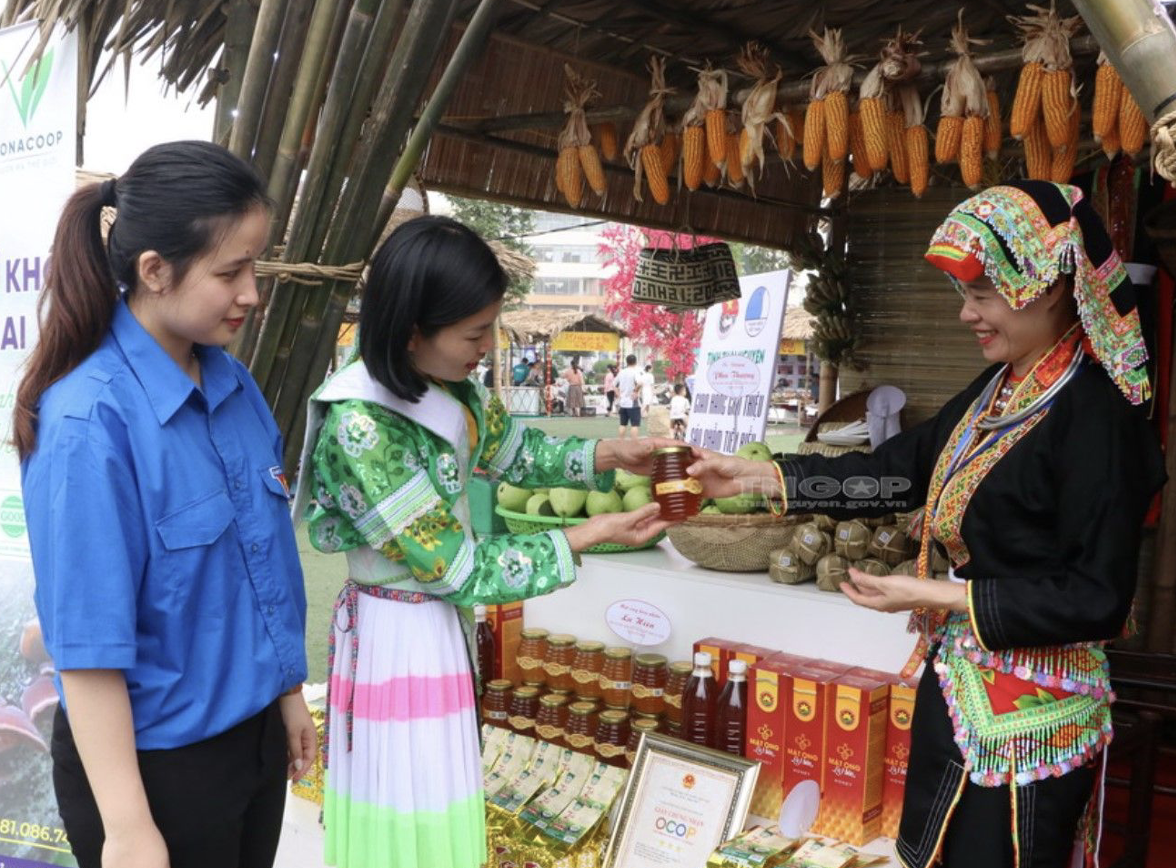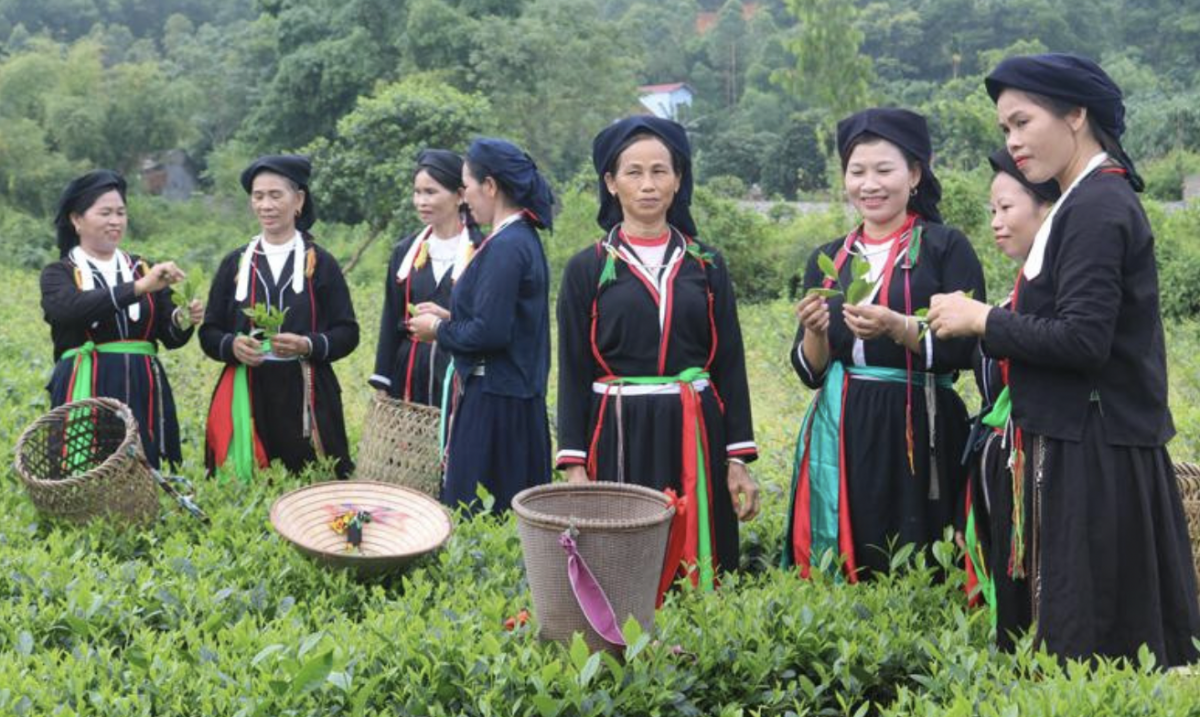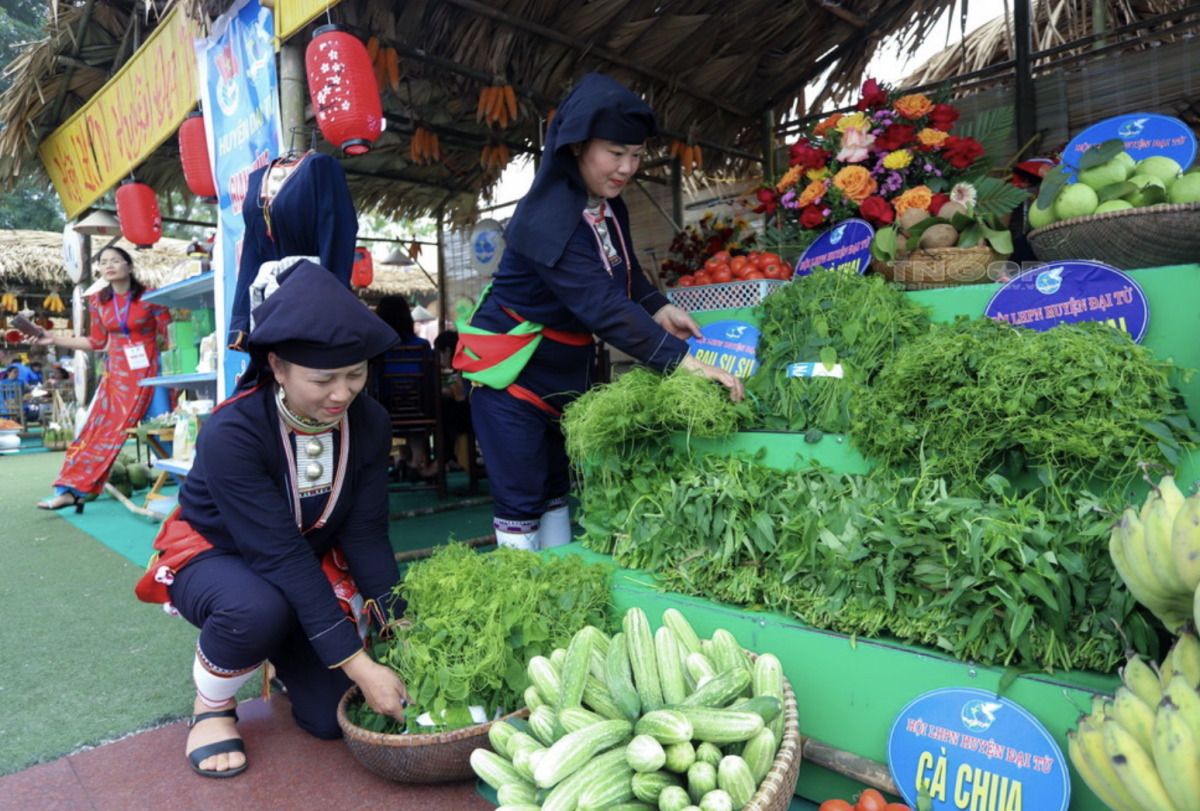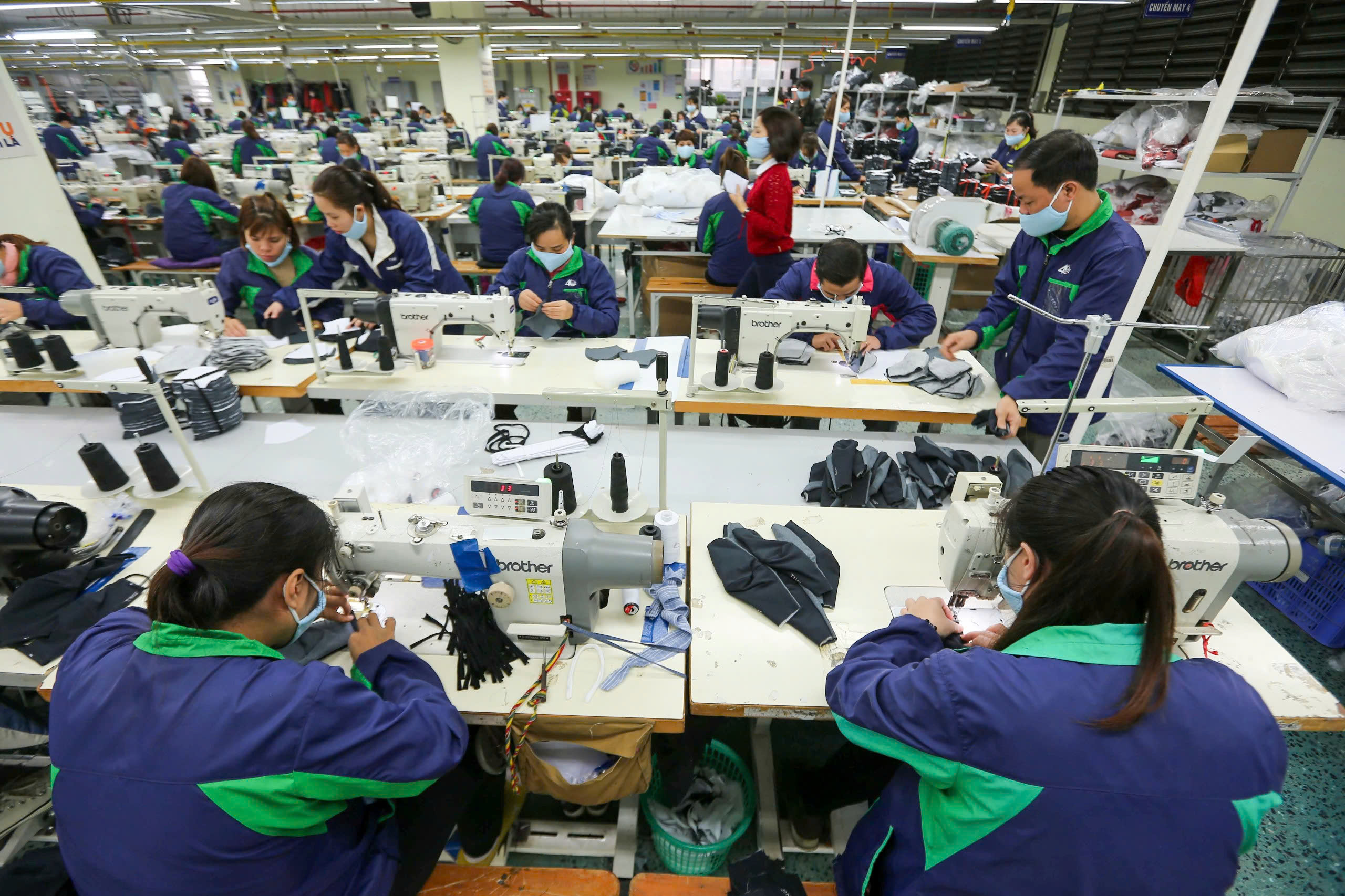
Vietnam to review over 20 years of Resolution 36 on overseas Vietnamese
19:05 | 23/03/2025 16:32 | 23/12/2025News and Events
New life in the highlands
In early June, the tea hills of Tan Cuong, Phu Luong, and Dong Hy glow with a vibrant green, quietly yet powerfully affirming the vitality of a land in transformation. The breeze carries not only the scent of tea but also the echoes of change, from newly expanded trade routes, well-organized wholesale markets, to storage warehouses and logistics centers gradually taking shape where remote hamlets once lay.
With over 30 percent of its population being ethnic minorities, Thai Nguyen is emerging as a leader in commercial infrastructure development among the northern midland and mountainous provinces. It is this infrastructure, not just paved roads, that provides the hidden lifeline nurturing agricultural production, distribution, and export. It enables local people not only to grow and produce but also to sell and live sustainably from their agricultural products.
 |
| In early June, the tea hills of Tan Cuong, Phu Luong, and Dong Hy glow with a vibrant green, quietly yet powerfully affirming the vitality of a land in transformation. Photo: Dinh Son |
According to the Thai Nguyen Department of Industry and Trade, over 248 products from the province have been certified under the OCOP (One Commune One Product) program, with tea dominating the list. Other signature highland products, such as Vo Nhai custard apples, Viet Cuong vermicelli, Phu Binh hill chicken, and Dinh Hoa forest honey, are striving to reach broader markets. However, such efforts require a foundation of modern commercial infrastructure with connectivity, storage, distribution, and traceability capabilities.
Thai Nguyen Province has clearly defined that investing in commercial infrastructure is more than just “building markets and opening roads.” The goal is to create a sustainable commercial ecosystem, where every commune has a fixed retail outlet, every district has a logistics center, and every region has a smart transit hub, integrated with digital operations.
Several pioneering models have demonstrated tangible benefits. In Dinh Hoa District, a local specialty showroom combined with a mini logistics hub has provided dozens of households with space to display, sell, and ship goods to other provinces. In Vo Nhai District, the “OCOP Market” is held periodically in conjunction with traditional festivals, attracting tourists and offering stable retail space for Dao, Tay, and Nung ethnic vendors.
Nguyen Ba Chinh, Director of the Thai Nguyen Department of Industry and Trade, emphasized: “We believe that developing commercial infrastructure cannot be separated from digital transformation and technology adoption. To bring commerce into every village, infrastructure must reach every doorstep, and markets must come to every home. And that must begin with people, their skills, awareness, and digital storefronts, not just bricks and steel.”
 |
| In highland regions, where every road brings hope and every storefront offers a chance to change lives, commercial infrastructure is the bridge that connects products with markets, and dreams with success. Photo: The Binh |
The challenge of retaining agricultural value
Under the clear guidance from the central government, Thai Nguyen Province has translated Resolution 48/NQ-CP and Decision 964/QD-TTg on commercial infrastructure development into a series of key programs for the 2021-2025 period. Hundreds of billions of dong have been allocated to upgrade rural markets, renovate storage facilities in disadvantaged areas, and construct rest stops and product showcases along key tourism routes like ATK Dinh Hoa and Phuong Hoang Cave - Mo Ga Stream.
Simultaneously, the province has introduced incentives for enterprises and cooperatives to invest in “soft infrastructure,” including digital sales platforms, traceability systems, and blockchain applications for quality control. Supply chain management software projects have been piloted for tea, vermicelli, and dried bamboo shoots in three key districts.
A notable highlight is the establishment of “Market 4.0,” a pilot model integrating cashless payments, product QR codes, and live-streaming sales at traditional markets. Basic vendor stalls are now “upgraded” into digitized outlets, enabling Dao, Mong, Tay ethnic minority sellers to directly reach urban consumers without intermediaries.
 |
| Thai Nguyen Province’s experience shows that effectively developing commercial infrastructure in ethnic and mountainous areas requires a holistic, multi-tiered, and people-centered approach. Photo: Dinh Son |
However, developing commercial infrastructure in ethnic minority and mountainous regions like Thai Nguyen is not without challenges. One of the biggest bottlenecks is the lack of synchronized planning. Some areas possess unique specialty products but lack aggregation points and preliminary processing centers, resulting in lost product quality during transport.
Transporting fresh produce from Dinh Hoa District to Thai Nguyen City or neighboring provinces is hampered by the lack of specialized vehicles, weak cold chain infrastructure, and unprofessional post-harvest handling.
Additionally, there is a shortage of qualified personnel to operate commercial infrastructure, particularly tech-savvy workers in the highlands. Some logistics centers in Dai Tu and Phu Luong districts are underutilized due to a lack of technicians and efficient operating procedures.
This reality underscores the need for a comprehensive commercial workforce training strategy tailored to local contexts and the technological adaptability of ethnic minorities.
Lessons from practice
Thai Nguyen Province’s experience shows that effectively developing commercial infrastructure in ethnic and mountainous areas requires a holistic, multi-tiered, and people-centered approach. The State must take the lead through investment in hard infrastructure, such as roads, rural markets, and regional trade centers, accompanied by favorable investment and credit policies.
Meanwhile, enterprises and cooperatives serve as operational pillars, adopting technology, managing logistics, and connecting products to markets. Meanwhile, ethnic communities must be empowered as central agents, trained and equipped to own and manage their storefronts and commercial pathways.
Thai Nguyen is gradually realizing this vision through a growing network of “digital OCOP stalls” connected to major domestic e-commerce platforms, and by developing a smart agricultural product consumption map. The province also set an ambitious target: by 2030, 100 percent of OCOP products rated three stars or higher will have fixed retail outlets and electronic traceability.
Department of Industry and Trade Director Nguyen Ba Chinh noted: “For e-commerce to grow sustainably, logistics must lead the way. A digital economy cannot function effectively unless goods are circulated quickly, efficiently, and affordably.”
Accordingly, Thai Nguyen is implementing a range of solutions to improve the digital supply chain. First, it is expanding logistics services. Since 2022, Plan 89/KH-UBND has been in place to boost competitiveness, clarify responsibilities among agencies, and build a professional and efficient logistics environment.
Second, the province actively supports logistics enterprises to scale up. Two major logistics firms, Thai Hung Logistics Co., Ltd. and ASG Logistics JSC, currently provide transport and warehousing services for partners inside and outside the province.
Most notably, the province is accelerating digital transformation in the transport sector, encouraging companies to apply technologies for vehicle tracking, route monitoring, cost optimization, and transparency in supply chains. Finally, it is developing logistics infrastructure in strategic locations, leveraging its position as a regional gateway to shorten transportation time and reduce costs for businesses.
These efforts are not merely investments in “logistics” but Thai Nguyen Province’s way of building a foundation for modern trade infrastructure, enabling goods to break free from remote mountainous areas and make their way to e-commerce platforms, domestic markets, and ultimately to consumers’ hands with the expected quality and speed.
In highland regions, where every road brings hope and every storefront offers a chance to change lives, commercial infrastructure is the bridge that connects products with markets, and dreams with success. Without infrastructure, commerce falters. Without commerce, agricultural products remain confined to remote villages.
Thai Nguyen stands as a vivid testament to a land that knows how to leverage policies, mobilize resources, and unlock local potential to pave the way for a modern, inclusive, and human-centered trade ecosystem amid the vast green highlands.

19:05 | 23/03/2025 16:32 | 23/12/2025News and Events

19:05 | 23/03/2025 16:30 | 23/12/2025Trade

19:05 | 23/03/2025 23:26 | 22/12/2025Industry

19:05 | 23/03/2025 23:19 | 22/12/2025News and Events

19:05 | 23/03/2025 14:41 | 22/12/2025News and Events